I visit the oldest Garnacha clones in Calatayud. 70 to 90 year old bush trained vines on rocky red and grey slate 900 meters high in altitude. Afterwards, a small walk through the small town of Munébrega and lunch at La Casona del Sonanar.
Today I would head to the Catalayud region in Spain to the small town of Munébrega. I would be meet by Victoriz Ordonez, Jorge Ordornez’s sister, Jose the plant manager, and Fernando the winemaker. Travel to each plot of Garnacha was much like a safari – slow, rocky and what seemed to last miles. Transportation of newly harvested grapes cannot be easy or quick.
Garnacha spread during the Kingdom Aragon when Celts brought seeds to this area 2,500+ years ago. These are the oldest clones of Garnacha in Calatayud.
The Breca vineyard was planted by hand in 1935. Garnacha is grafted on American roostocks and head pruned. The older vines only have a few bunches per vine and the clusters can be very loose and small. The younger vines (if 70 years old is young) will have tighter and larger bunches. Pictures of both below. Harvest is from mid-October to mid-November.
Garnacha naturally regulates the growth of canes and leaves, naturally balanced to putting energy into fruit. It was explained, other varieties have uncontrolled canes and leaf growth, needing constant pruning. But not Garnacha.
One of the oldest vines. You can see the old and thick truck wood. Also, the grape clusters are very small and not normal tight bunches.
The soil is very rocky, a mix of red and grey slate. Solid rock is just 20cm under the topsoil.
View from the top. The vineyards stretch up to 900 meters in elevation, which, as you can see below, are some of the highest vineyards in this region.
Younger, more productive vine.
Most of the vineyards were very steep. Combined with the rocky slate soils, it was not easy to walk up the slope let alone harvest grapes. The plastic bins for harvest would quickly slide down the slope if there were not held on to.
Vintage variation is an issue here as well. 2012 saw the driest vintage in over 40 years. 2013 was very difficult with too much rain. Frost and hail reduced yields by almost 70%. 2009, 2010, and 2011 were also very dry years. This ultimately affects production quantities.
The considerably high altitude produces a constant breeze which helps keep out the bugs and retains acidity in the grapes. All the vineyards are naturally farmed.
Two wines are made from the vineyards we visited – Garnacha de Fuego and Breca. Breca means ‘a state of balance’ or a ‘scale’. Jorge’s love for fishing is translated on to the label design.
Garnacha de Fuego comes from the younger, higher yielding vines. It’s the first wine Ordonez has aged in large barrels stating “the wine does not need extra tannin”. This wine is an amazing value, well under $8 per bottle. I have a new respect for this wine after seeing the amount of work put into harvest and the average age of vines.
Bodegas Breca comes from the oldest and lowest yielding vines.
Scenes from the town of Munebrega.
Lunch at La Casona Del Solanar
Calle Mártires, 19
50219 Munébrega
Zaragoza, Spain
http://www.casonadelsolanar.com/
Iberico Ham over Sweet Green Peppers
Salad of Iberico Ham, Goat Cheese, Red Wine Reduction, Tomato Marmalade
Lamb, Gravy, Potatoes
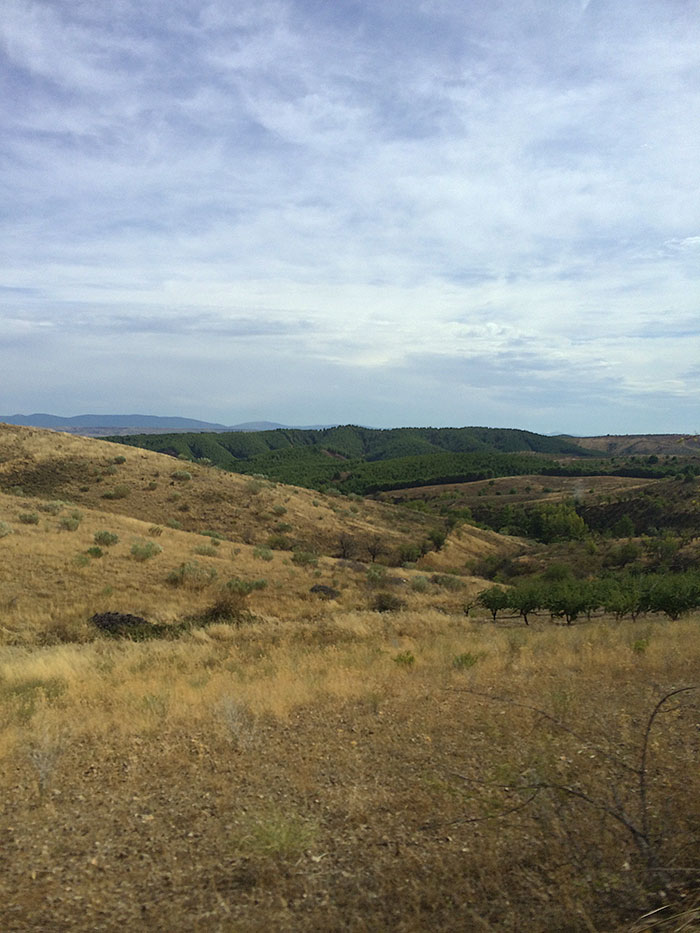





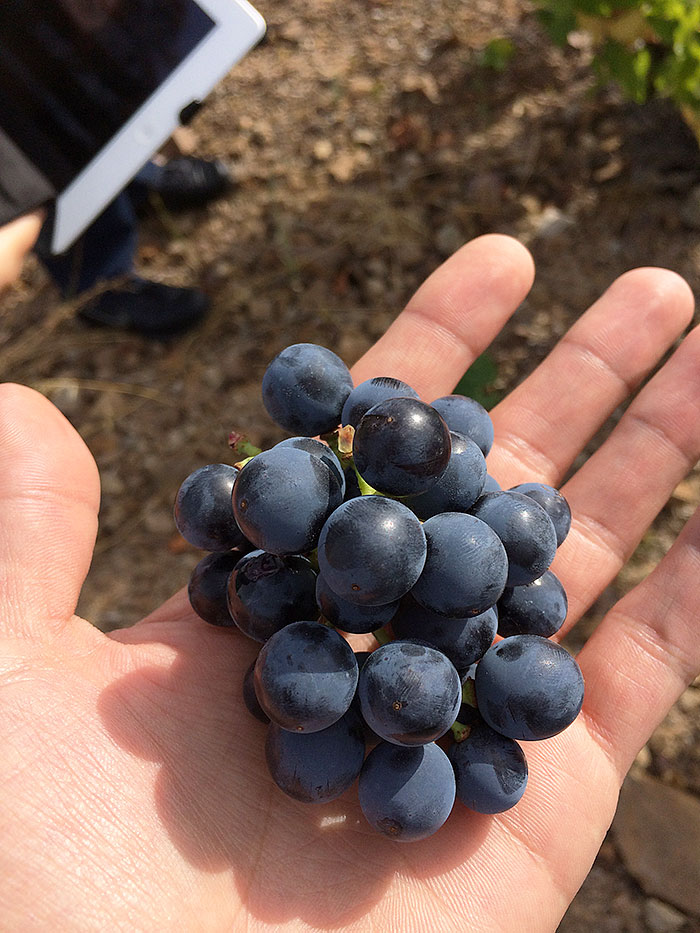




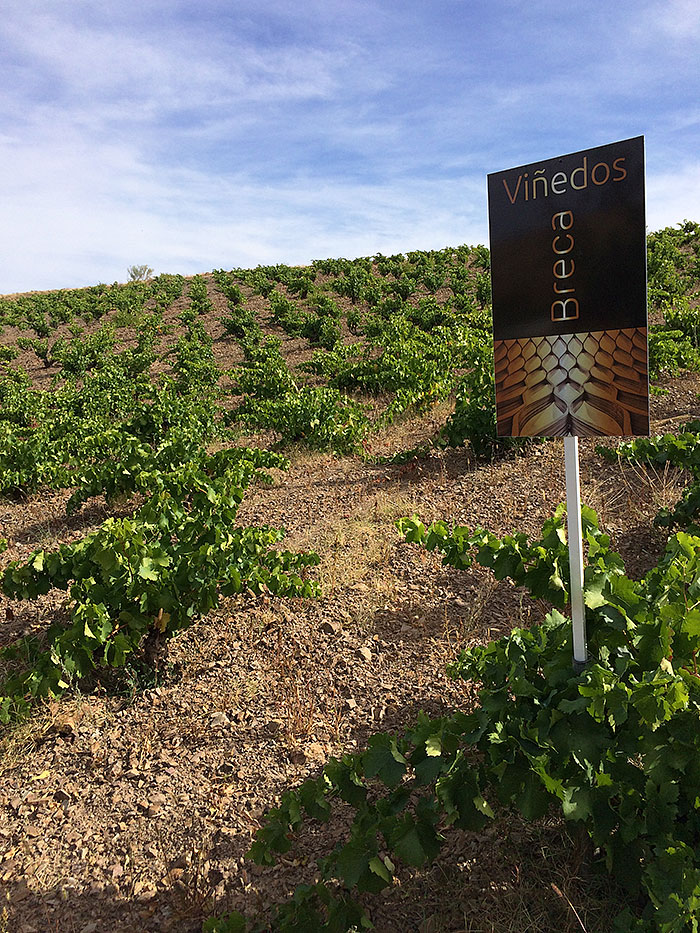
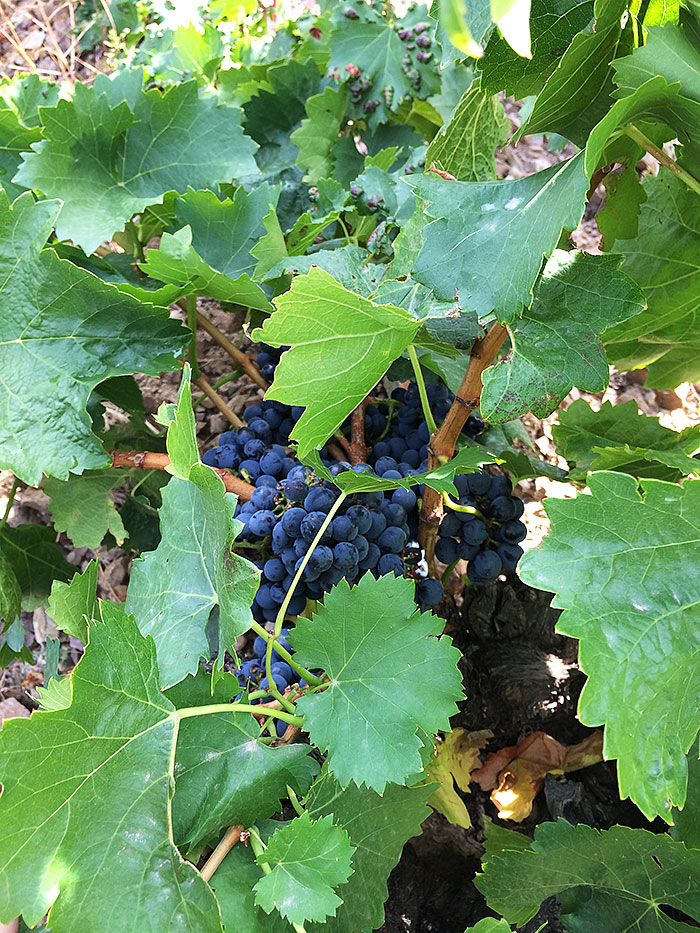






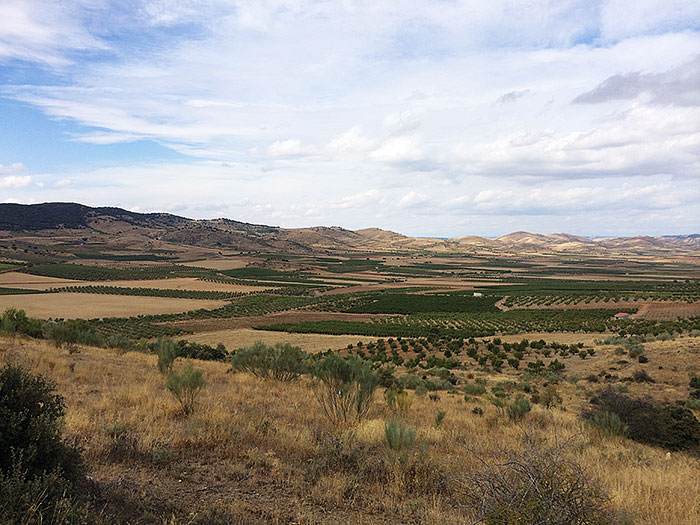

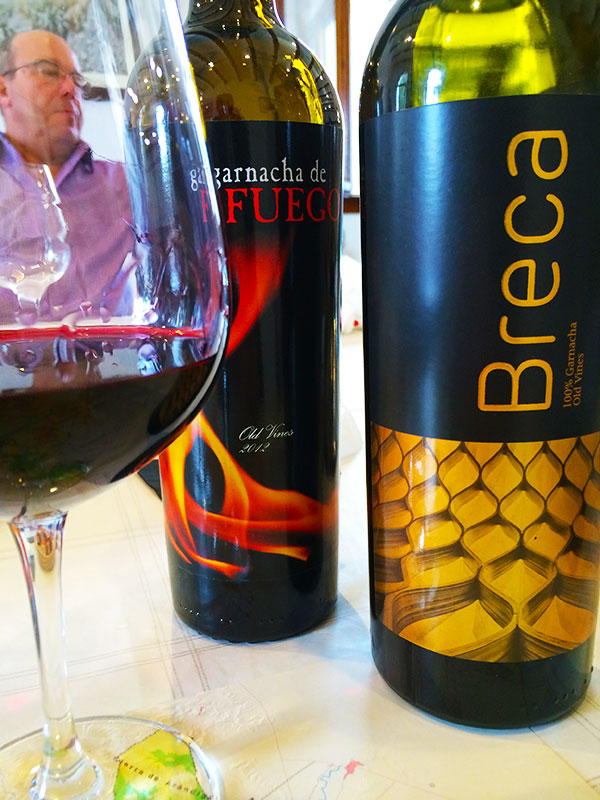
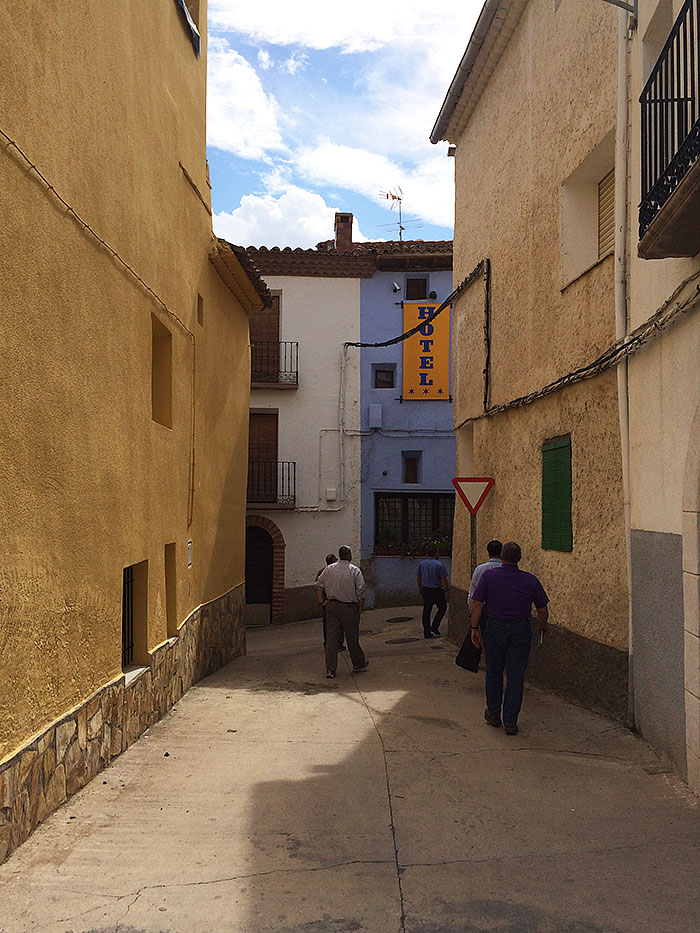

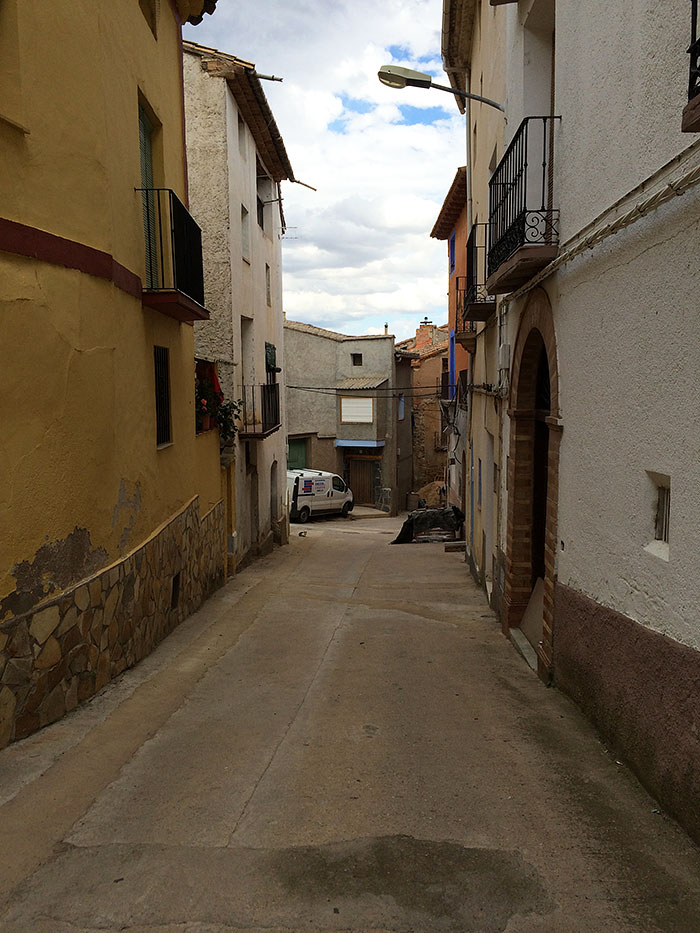




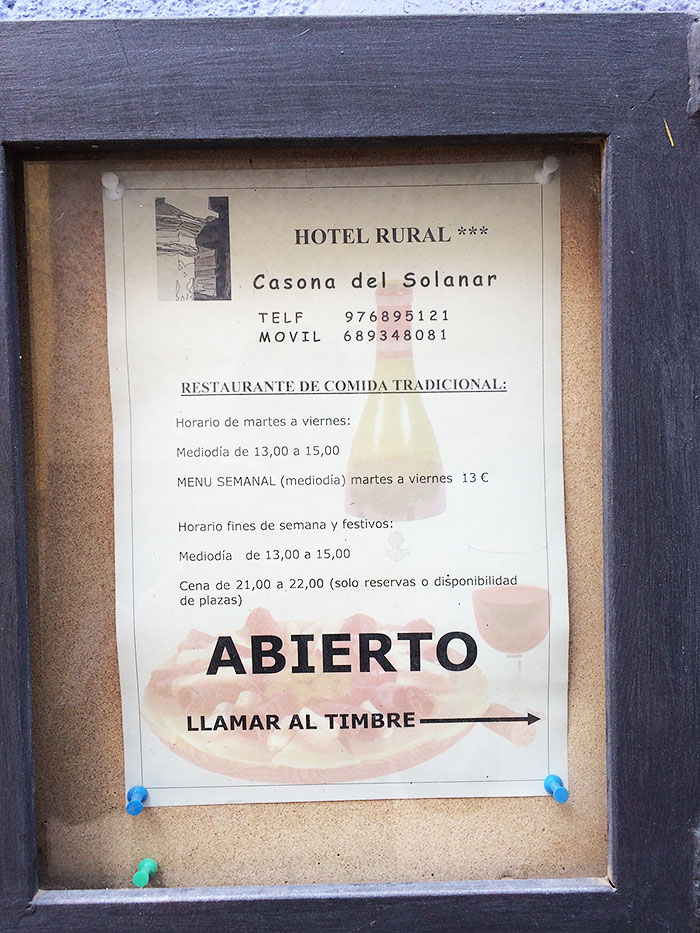


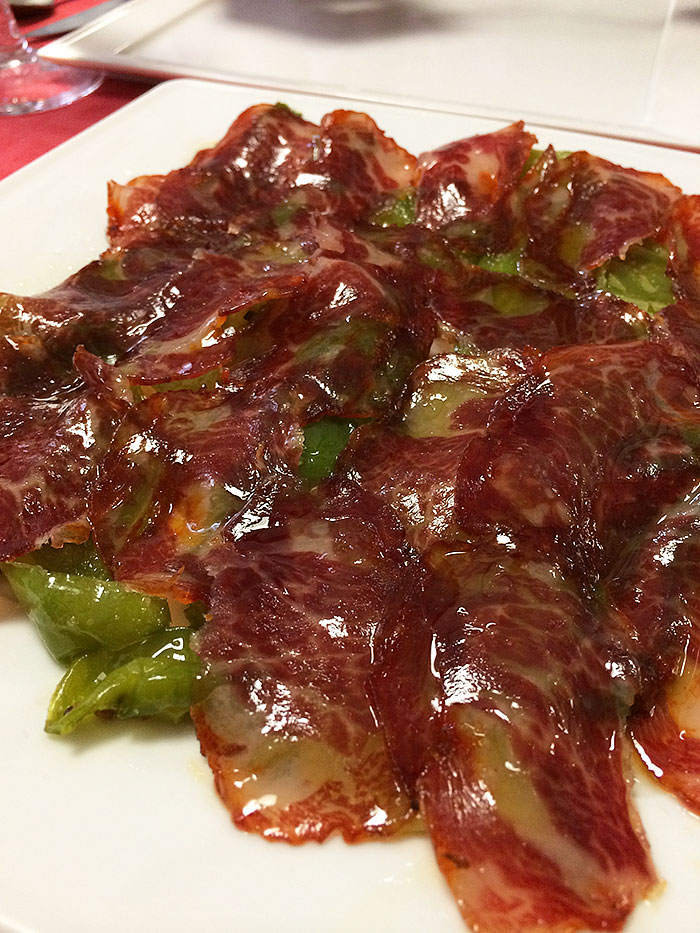
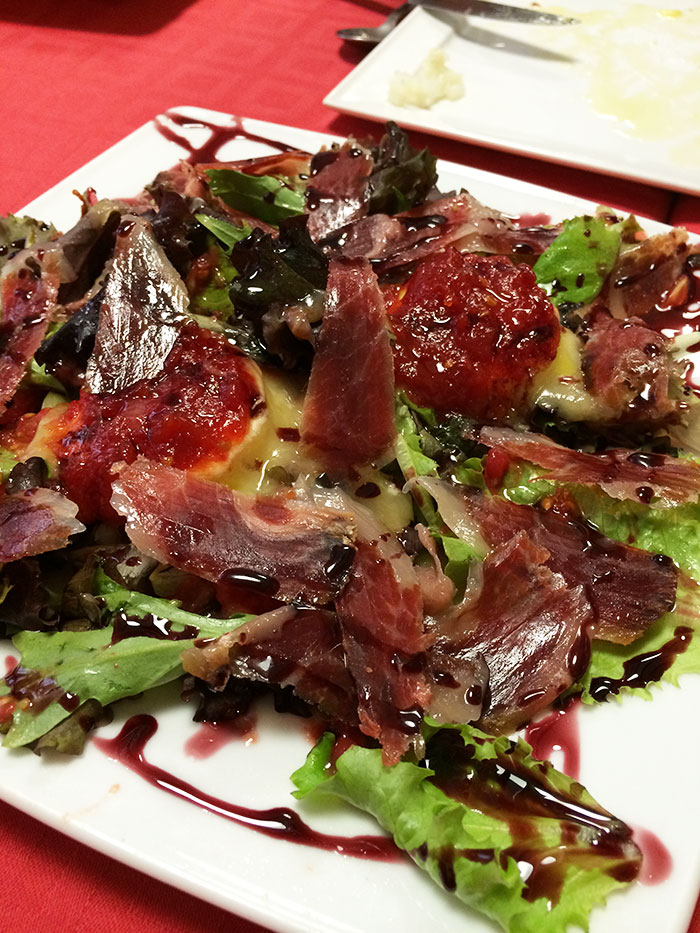

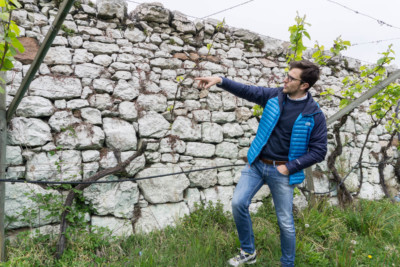

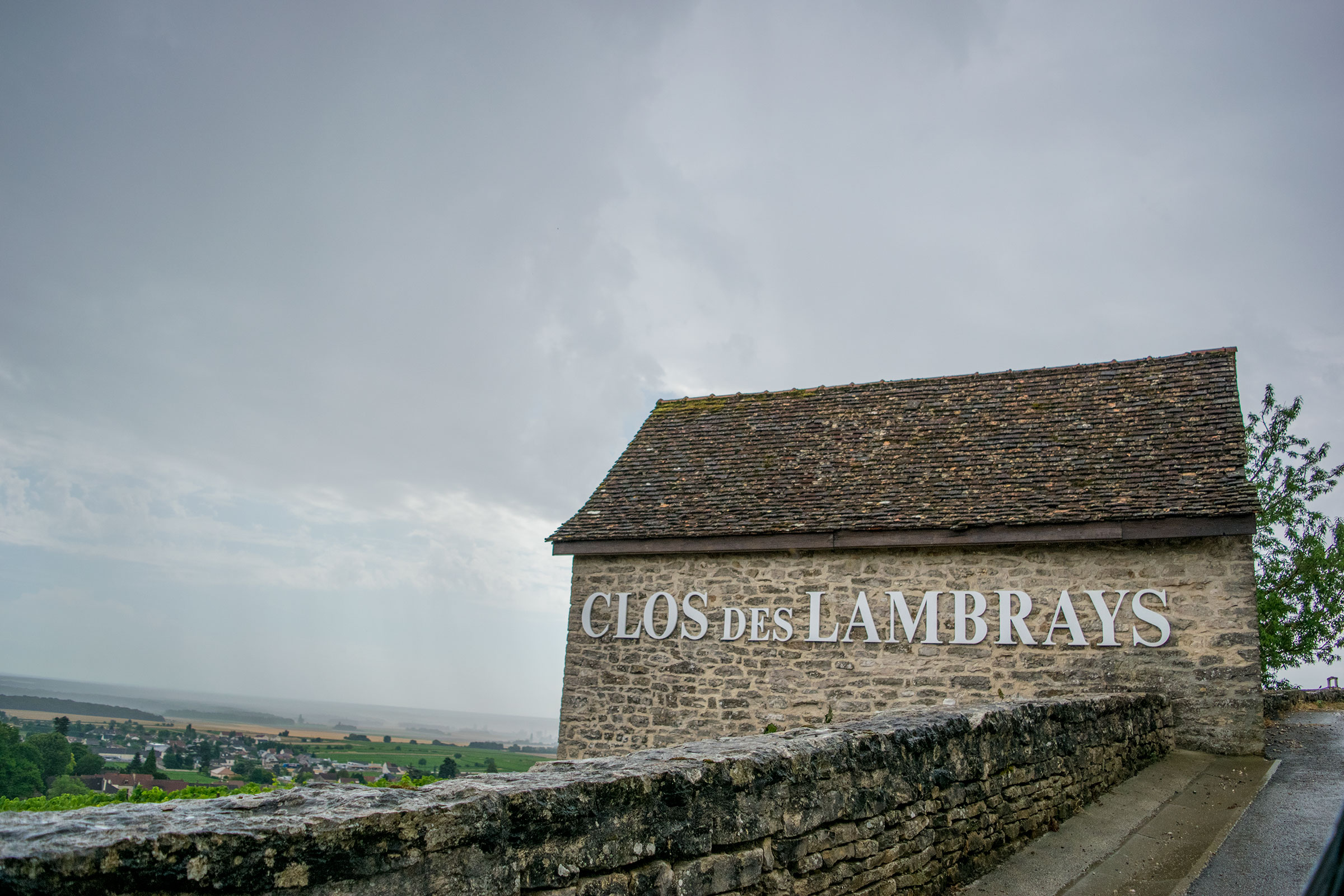
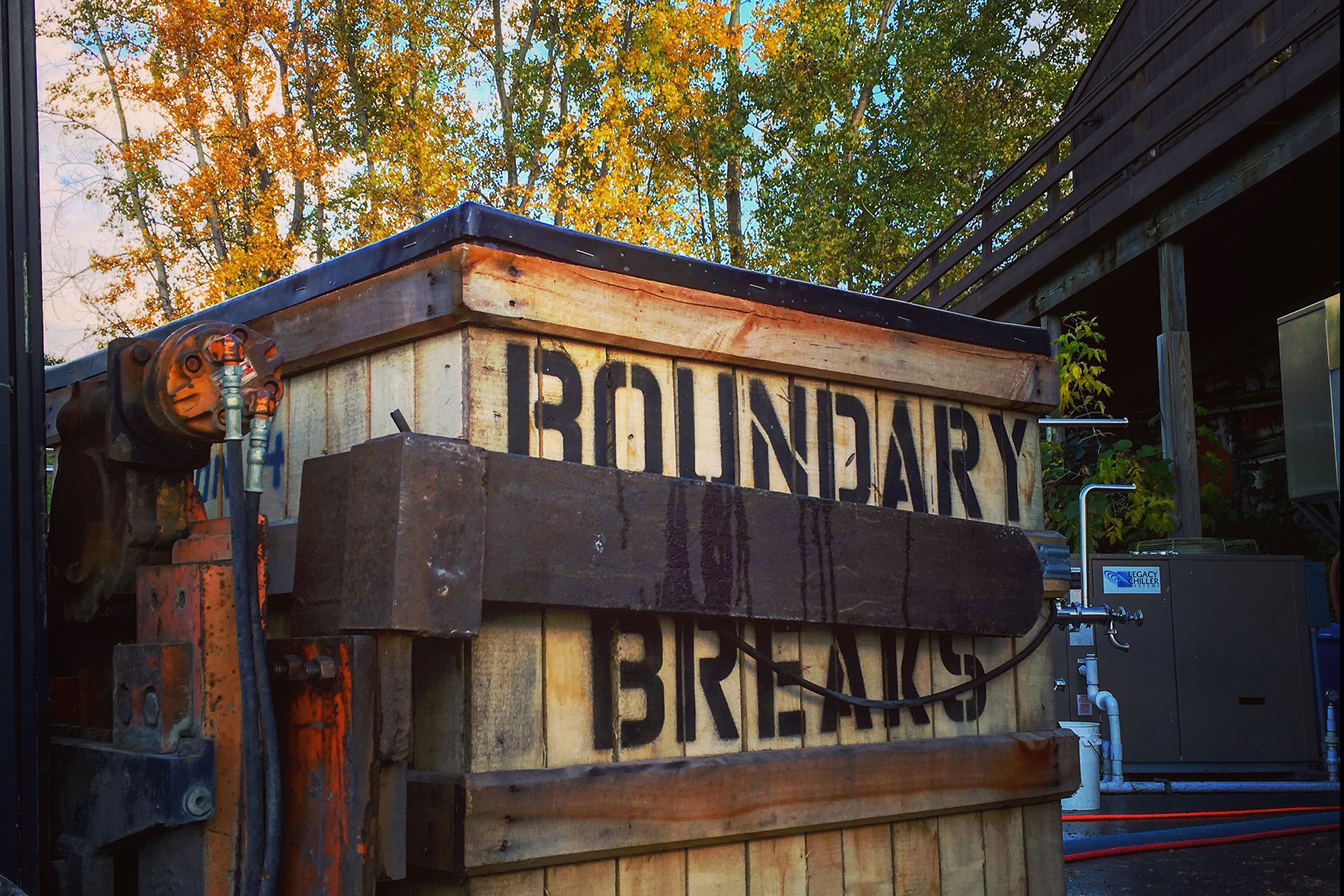
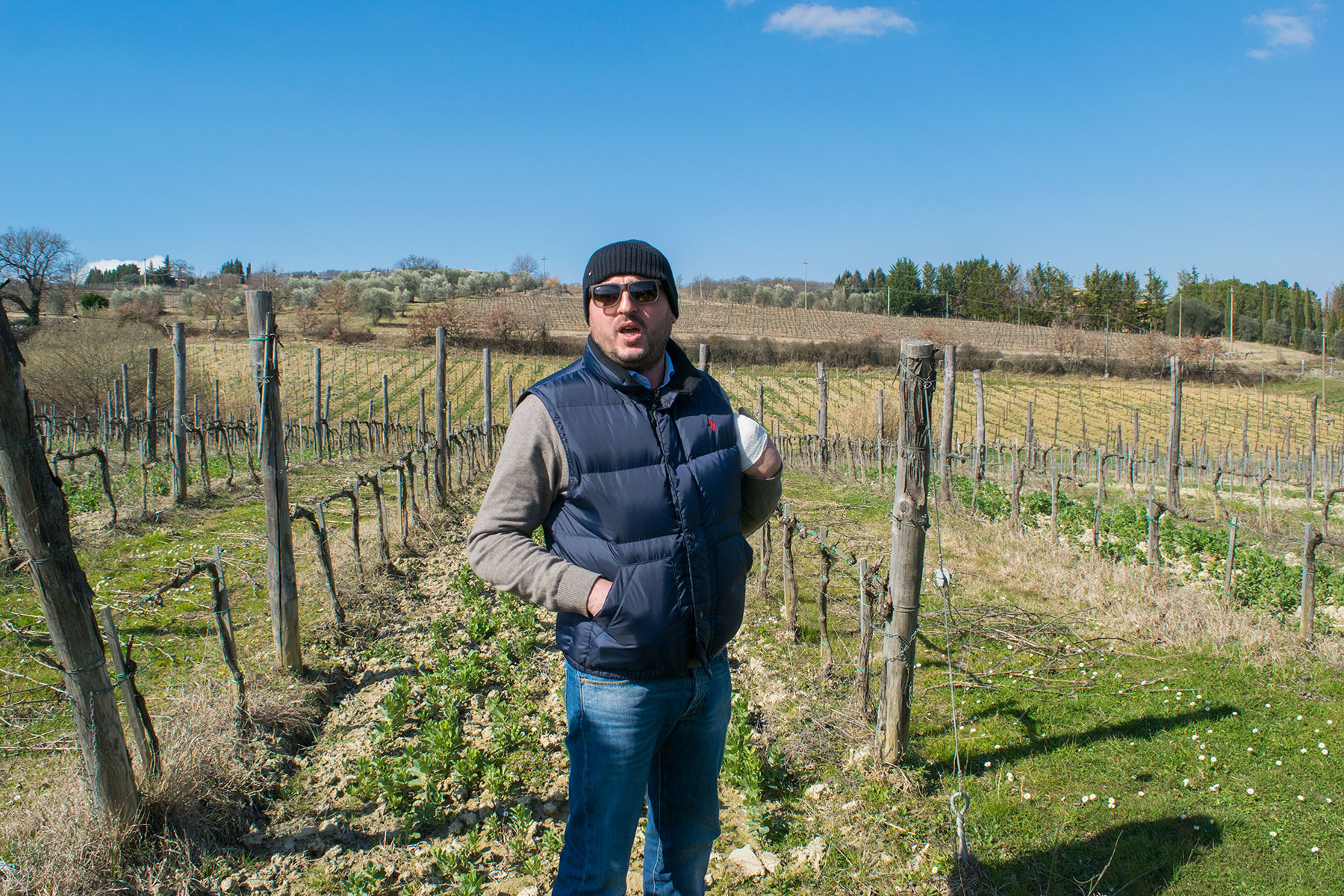
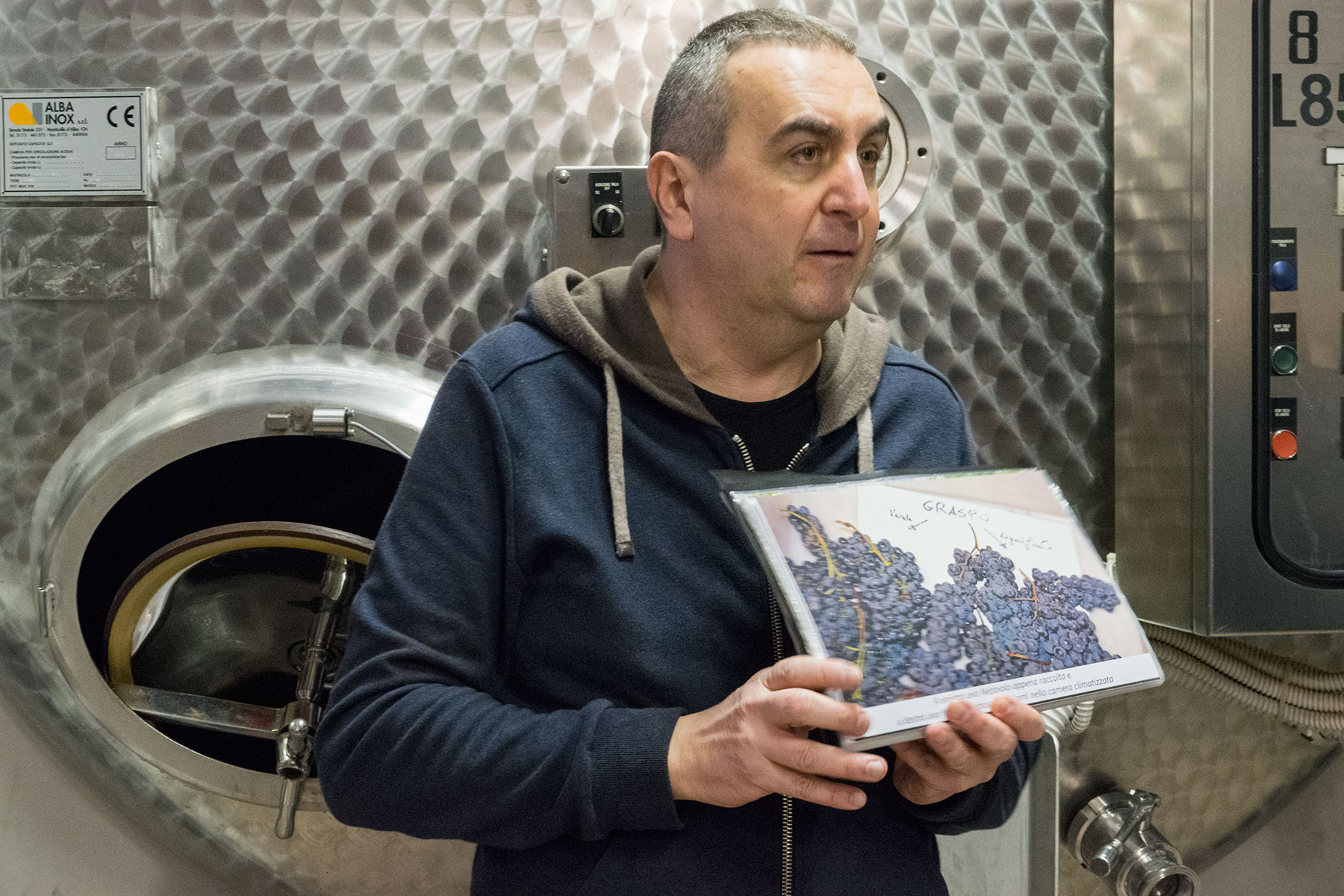
Leave A Comment
You must be logged in to post a comment.